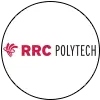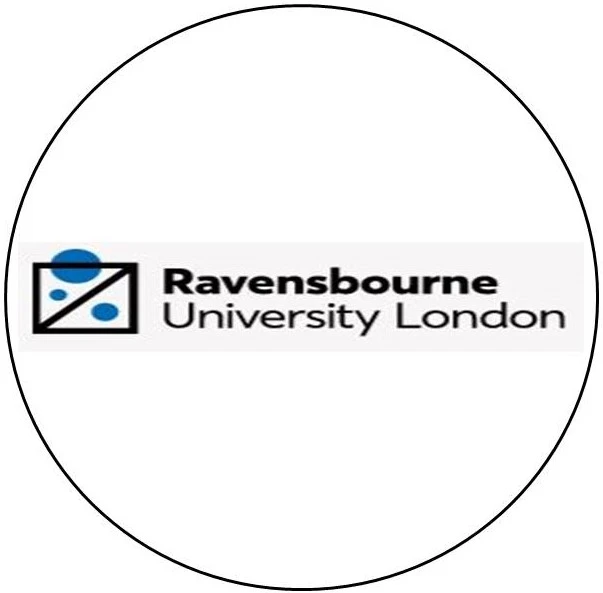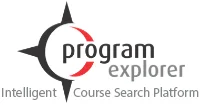• PTE
A Complete Guide on PTE Personal Introduction
3808 Reads
3 min Read
Delve into the world of PTE and master the art of Personal Introduction with this blog. Whether a student or a working professional, fulfil your dream of studying abroad with the highest PTE scores. Sharpen your Speaking skills by following the mantra of authenticity, practice and confidence.
Table of Contents
For International students wanting to study or live abroad, one of the biggest hurdles is giving an English proficiency test, such as the PTE, also known as the Pearson Test of English. A globally recognized test for assessing non-native English speakers' competency in the English language, the PTE test measures four critical skills- Speaking, Reading, Writing and Listening. The test is fully automated and computer-delivered, thus ensuring complete fairness and non-biased scores. But what truly makes the PTE unique is the integrated approach in which it is curated, often assessing a test-taker in more than one skill in a single question.
What exactly is the Personal Introduction task?
The Speaking module of the PTE test begins with a Personal Introduction, wherein 25 seconds are provided to prepare the response, followed by the next 30 seconds to make the Introduction. The candidate should make the Introduction as appealing, understandable and coherent as possible.
The PTE Personal Introduction is a perfect opportunity for an individual to flaunt their speaking skills and make the ultimate first impression. Although this task is not scored, one must take it seriously as it serves several purposes. Firstly, it acts as a proof to confirm a person's identity later, in case of any dispute or misunderstanding. Moreover, it is also used by Visa officials, Universities or other academic Institutions. So, do not take it lightly and prepare for it beforehand!
What to include?
A person's ability to introduce themselves properly, attractively and smartly is judged in the PTE Personal Introduction task. Therefore, it is essential to know what must be included in it. Here is a list-
- Name and Age
- Country of Origin or Birth
- Field of Study or Work
- Highest level of qualification
- Hobbies and interests
- Future goals and aspirations
- Reasons to study abroad
- Why the PTE exam
While these are just a few pointers, one has the leniency to expand beyond these. One can mention any exciting detail that they feel sets them apart.
Personal Introduction- A Sample and Template
Following is a template along with a sample that one can use for their self-introduction-
Hello, my name is ABC [Name], and I was born and raised in Delhi, India [Place of Origin]. I am 20 years old [Age] and hold a bachelor's degree in Journalism and Mass Communication with a working experience of 3 years [Qualification/ Specialization]. I am a highly passionate and motivated individual with a keen desire to pursue my Postgraduate studies in the same field in Canada [Future goals]. Other than academics, I love to sing and play the piano. I am also an avid reader and enjoy reading autobiographies [Hobbies]. I am taking the PTE test with the hope of pursuing my master's from Canada and proving my English competency [Why PTE]. Thank you so much for your time [Regards].
Tips to follow-
The Personal Introduction task of the PTE Speaking section is pretty simple, yet requires one's attention. Many students feel overconfident and do not prepare enough for this task and end up getting flustered during the test. Follow these tips to not be in that position!
Remain Confident-
Always remember the importance of staying confident. While recording the Personal Introduction, always keep your head high and chin straight. Keep your tone steady, and maintain a standard pace and clarity. A person that eludes confidence and conviction always makes a better impression on the examiner. Furthermore, it helps cover up any other mistake, such as a fumble, stammer or grammatical error.
Practice, Practice and Practice-
There is no denying the fact that practice makes perfect, so value that. Be bold in practicing and speaking in English regularly. There are a few methods that individuals find helpful-
- Recording yourself is one of the best ways to practice for the speaking test, as it helps one evaluate their strengths and weaknesses and rectify their mistakes.
- Speaking in front of the mirror is another helpful tip to incorporate while practicing for the Personal Introduction task. Speaking in front of the mirror helps one be self-aware regarding gestures, body language and confidence. It also aids in improving the overall fluency.
Authenticity
Being authentic while delivering the Personal Introduction is critical, as it is the whole point of this exercise. The Introduction should reflect who you are and not be fake. Being honest, authentic and genuine helps build trust, uniqueness and relatability. Additionally, it also allows for the authentic self-expression of a person.
Follow a structure
Everyone only gets 25 seconds to prepare before recording the Personal Introduction. Utilize this time in framing a structure and pattern in the mind so that vital information is not left out. Go to the examination center with a game plan and stay within it. 30 seconds are provided to record, including a brief introduction, a main body and a closing. Having a planned ending to the Personal Introduction will always act in one's favor. That being said, time management is also integral to this task.
Conclusion
Acing the PTE Personal Introduction can set the tone for the PTE test. It can act instrumental in improving one's overall score and help one achieve the dream of getting into their dream University. It acts as a measure for testing one's English proficiency and proving their English speaking capabilities. With practice, dedication, and hard work, individuals can prepare a compelling and captivating Personal Introduction for themselves.
FAQ
Get great articles direct to your inbox
The latest news, articles, and resources, sent straight to your inbox every month.
Popular Universities to Study Abroad
World class education waiting for you.

Seneca Polytechnic - Seneca at York Campus
Ontario, Canada • 90 Programmes
Tuition Fee : CAD 15000-32000 / year

Georgian College - Midland Campus
Ontario, Canada • 4 Programmes
Tuition Fee : CAD 14000-14500 / year
.webp)
Conestoga College - Milton - Parkhill Drive - Campus
Ontario, Canada • 50 Programmes
Tuition Fee : CAD 14000-14500 / year
.png)
Shorelight Group - Salve Regina University
Rhode Island, USA • 36 Programmes
Tuition Fee : USD 49000-49500 / year

OIEG Group- Mercy University - Manhattan Campus
New York, USA • 16 Programmes
Tuition Fee : USD 22000-23000 / year

The Sarina Russo Group - Russo Business School - Brisbane Campus
Queensland, Australia • 1 Programmes
Tuition Fee : AUD 19500-20000 / year

Red River College Polytechnic - Portage la Prairie
Manitoba, Canada • 2 Programmes
Tuition Fee : CAD 17000-18500 / year

OIEG Group - Ravensbourne University London
England, UK • 46 Programmes
Tuition Fee : GBP 16500-17000 / year
Popular English Language Proficiency Exams
Blogs and Articles
Curated content to keep you updated on the latest education trends, news and more.
ACT vs. SAT: Which One to Choose?
Updated on • Apr 12,2025 05:40 PM IST • Study Abroad
Updated on • Apr 11,2025 05:53 PM IST • IELTS
Backlog Certificate: A Complete Guide
Updated on • Apr 11,2025 01:47 PM IST • Study Abroad Guidance
PTE Score Chart 2025: PTE Exam Scoring System & Calculation
Updated on • Apr 09,2025 05:37 PM IST • PTE
Master's in Computer Science in the USA
Updated on • Apr 08,2025 05:59 PM IST • USA
Top Trending MBA Specialisations in 2025
Updated on • Apr 08,2025 04:47 PM IST • Study Abroad
Describe Your Hometown IELTS Speaking Part 1 Topic
Updated on • Apr 07,2025 05:50 PM IST • IELTS
How to Get a Job in USA in 2025
Updated on • Apr 07,2025 03:19 PM IST • USA
Highest Paying Jobs in the World
Updated on • Apr 01,2025 05:31 PM IST • Study Abroad
Student Life in Ireland in 2025
Updated on • Mar 29,2025 05:50 PM IST • Ireland
Top Public Universities in Germany
Updated on • Mar 26,2025 04:33 PM IST • Germany
Top Universities for Masters in Ireland in 2025
Updated on • Mar 25,2025 04:36 PM IST • Ireland
Cost of Living in Singapore for Indian Students in 2025
Updated on • Mar 22,2025 11:57 AM IST • Singapore
PTE vs IELTS : Know the Difference and Which is Easier?
Updated on • Mar 21,2025 03:38 PM IST • IELTS
Updated on • Mar 20,2025 10:19 AM IST • Germany
Updated on • Mar 12,2025 11:20 AM IST • Ireland
Updated on • Mar 11,2025 01:18 PM IST • USA
Best Countries to Study Abroad for Indian Students in 2025
Updated on • Mar 08,2025 01:24 PM IST • Study Abroad
Updated on • Mar 05,2025 12:19 PM IST • UK
Fastest Growing Job Sectors in Germany in 2025
Updated on • Feb 28,2025 04:04 PM IST • Germany
Related Blogs and Articles
A little effort to provide an authentic and reliable content for keen readers!!
PTE Score Chart 2025: PTE Exam Scoring System & Calculation
Updated on • 09-04-2025 • PTE
PTE Exam Centers in India 2025: Check City Wise PTE Exam Centers
Updated on • 16-01-2025 • PTE
PTE Accepted Universities in Australia
Updated on • 10-01-2025 • PTE
How to score 90 in PTE-A Exam?
Updated on • 25-10-2024 • PTE
PTE Accepted Universities in USA
Updated on • 03-02-2024 • PTE
PTE Exam Dates 2024: Check Month-Wise Exam Slot Booking
Updated on • 15-01-2024 • PTE
PTE Speaking: Repeat Sentence Tips and How to Answer Short Questions
Updated on • 11-08-2023 • PTE
PTE Describe Image- A Comprehensive Manual
Updated on • 10-08-2023 • PTE
Vital Last-Minute Preparation Tips for PTE
Updated on • 06-07-2023 • PTE
PTE Read Aloud: Sample Questions, Scoring Criteria, Tips and Tricks
Updated on • 28-06-2023 • PTE
Common Mistakes in Writing Task of PTE- Academic
Updated on • 22-06-2023 • PTE
PTE Read Aloud: Sample Questions, Scoring Criteria, Tips and Tricks
Updated on • 20-06-2023 • PTE
Best PTE training institute in Chandigarh - Canamprep
Updated on • 11-05-2023 • PTE











